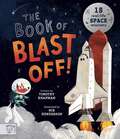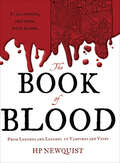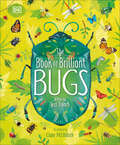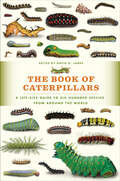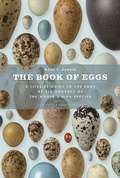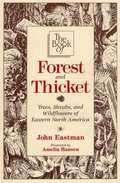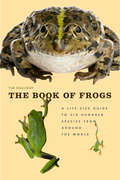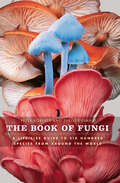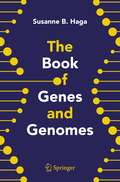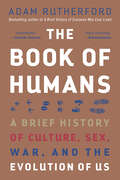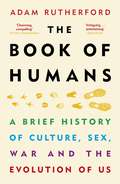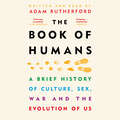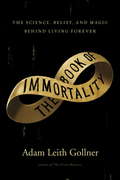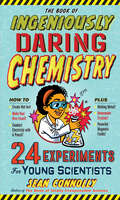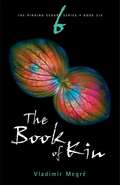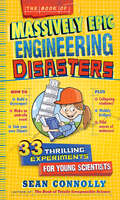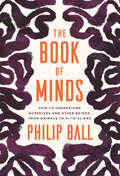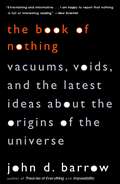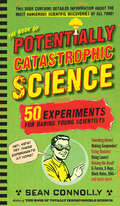- Table View
- List View
The Book of Beetles: A Life-Size Guide to Six Hundred of Nature's Gems
by Patrice Bouchard“Profiles 600 of the most stunning, most wonderfully adapted beetles around . . . The result is a work that is nothing short of magnificent.” —WiredWhen renowned British geneticist J. B. S. Haldane was asked what could be inferred about God from a study of his works, Haldane replied, “An inordinate fondness for beetles.” With 350,000 known species, and scientific estimates that millions more have yet to be identified, their abundance is indisputable as is their variety. They range from the delightful summer firefly to the one-hundred-gram Goliath beetle. Beetles offer a dazzling array of shapes, sizes, and colors that entice scientists and collectors across the globe.The Book of Beetles celebrates the beauty and diversity of this marvelous insect. Six hundred significant beetle species are covered, with each entry featuring a distribution map, basic biology, conservation status, and information on cultural and economic significance. Full-color photos show the beetles both at their actual size and enlarged to show details, such as the sextet of spots that distinguish the six-spotted tiger beetle or the jagged ridges of the giant-jawed sawyer beetle. Based in the most up-to-date science and accessibly written, the descriptive text will appeal to researchers and armchair coleopterists alike.The humble beetle continues to grow in popularity, taking center stage in biodiversity studies, sustainable agriculture programs, and even the dining rooms of adventurous and eco-conscious chefs. The Book of Beetles is certain to become the authoritative reference on these remarkably adaptable and beautiful creatures.“Photographs of more than 600 colorful, glossy species, resembling bejeweled broaches morethan creepy crawlies, are presented at actual size.” —Publishers Weekly
The Book of Blast Off!: 15 Real-Life Space Missions
by Timothy Knapman Nik HendersonYoung readers will discover the spacecraft and astronauts from 15 iconic space missions in The Book of Blast Off!, an out-of-this-world rhyming picture book from bestselling author Timothy Knapman and illustrator Nik Henderson. <p><p>3 . . . 2 . . . 1 . . . Blast off! Embark on a journey into space aboard rockets, space capsules, satellites, rovers, and more. Simple rhyming text and engaging illustrations introduce children to the space crafts and missions that changed the way we understand the universe. Kids will also meet some of the inspiring astronauts who carried out the missions, from John Glenn and Neil Armstrong to Charles Bolden, Jessica Meir, and Christina Koch. <p><p>A delightful read at bedtime or any time a child wants to reach for the stars, missions included are: Sputnik 1; Friendship 7; Mariner 4; Apollo 11; Apollo 13; Voyager 1; Hubble Telescope; Galileo; Cassini-Huygens; International Space Station (inaugural mission); Kepler Telescope; Rosetta Probe; International Space Station (all-female space walk); Perseverance Rover; and Artemis.
The Book of Blood: From Legends and Leeches to Vampires and Veins
by HP NewquistThis award–winning YA book takes readers on a fascinating tour through the world of blood—from ancient history to modern science.HP Newquist’s thrilling volume explores the dark and often fascinating tales about blood—with an occasional side trip to explore the stranger aspects about blood and our relationship to it. Though common among living beings, this substance is anything but ordinary. People have always feared and respected blood. It spills out at both birth and death, indicating events of the utmost significance. Ancient civilizations couldn’t perform religious rituals without this sacred substance. Doctors up through the nineteenth century attempted to cure mysterious illnesses by draining their patients’ blood. Scientists only recently began to understand how its microscopic components nourish the entire body, why simple transfusions don’t always work, and that bloodletting likely killed people who otherwise would have lived. Back before people understood what blood really was, they had to weave their own explanations. From vampire legends to medieval medical practices and Mayan sacrificial rites, this comprehensive investigation into blood’s past and present will surely enthrall. And if this account is a little blood-curdling, well, that’s half the fun!Winner of the Magnolia Award
The Book of Brilliant Bugs (The Magic and Mystery of the Natural World)
by Jess FrenchDiscover the insects of the world!Earth&’s creepy crawlies may be small but they are far from boring! Learn how they contribute to life on the planet, where they live, what they eat, how their bodies work and what makes them so special. This beautifully illustrated bug book for kids for ages 7-9 is packed with: • Fascinating information about bugs that supports and goes beyond the curriculum • Stories and facts to convey the amazing world of creepy-crawlies • Facts and information, with detailed illustrations and photographs of insects, spiders, molluscs and more • Compelling text written by insect expert, author and television presenter Jess French • Stunning photographs of individual creatures, from beetles to butterflies Take a magical journey through the forest floor, down into the deepest caves and even across the open ocean. The Book of Brilliant Bugs, written by insect expert Jess French, takes children on an expedition into the bug kingdom. The insect book is filled with fascinating facts about these little animals, how bugs pass on messages, compete for food, seek true love and fill the air with buzzing wings. It also shows how bugs help look after our planet and how we can help them.Young animal enthusiasts can spot and learn all the main bug groups. From worms, snails, millipedes and centipedes, spiders and scorpions, woodlice, bees and even bugs that glow! This educational natural science book will encourage children to love and appreciate science and nature.
The Book of Caterpillars: A Life-Size Guide to Six Hundred Species from Around the World
by David G. James“For the lover of all things lepidopterous, The Book of Caterpillars is a beautifully curated collection and guide to 600 species from around the globe.” —The American Biology TeacherWhile most of us picture caterpillars as cute fuzzballs munching on leaves, there is much more to them than we imagine. A caterpillar’s survival hinges on finding enough food and defending itself from the array of natural enemies lined up to pounce and consume. And the astounding adaptations and strategies they have developed to maximize their chances of becoming a butterfly or moth are only just beginning to be understood, from the Spicebush Swallowtail caterpillar that resembles a small snake to the Eastern Carpenter Bee Hawkmoth caterpillar that attempts to dissuade potential predators by looking like a diseased leaf.The Book of Caterpillars unveils the mysteries of six hundred species from around the world, introducing readers to the complexity and beauty of these underappreciated insects. With the advent of high-quality digital macrophotography, the world of caterpillars is finally opening up. The book presents a wealth of stunning imagery that showcases the astonishing diversity of caterpillar design, structure, coloration, and patterning. Each entry also features a two-tone engraving of the adult specimen, emphasizing the wing patterns and shades, as well as a population distribution map and table of essential information that includes their habitat, typical host plants, and conservation status. Throughout the book are fascinating facts that will enthrall expert entomologists and curious collectors alike.A visually rich and scientifically accurate guide to six hundred of the world’s most peculiar caterpillars, this volume presents readers with a rare, detailed look at these intriguing forms of insect life.
The Book of Eels: Our Enduring Fascination with the Most Mysterious Creature in the Natural World
by Patrik SvenssonPart H Is for Hawk, part The Soul of an Octopus, The Book of Eels is both a meditation on the world’s most elusive fish—the eel—and a reflection on the human conditionRemarkably little is known about the European eel, Anguilla anguilla. So little, in fact, that scientists and philosophers have, for centuries, been obsessed with what has become known as the “eel question”: Where do eels come from? What are they? Are they fish or some other kind of creature altogether? Even today, in an age of advanced science, no one has ever seen eels mating or giving birth, and we still don’t understand what drives them, after living for decades in freshwater, to swim great distances back to the ocean at the end of their lives. They remain a mystery.Drawing on a breadth of research about eels in literature, history, and modern marine biology, as well as his own experience fishing for eels with his father, Patrik Svensson crafts a mesmerizing portrait of an unusual, utterly misunderstood, and completely captivating animal. In The Book of Eels, we meet renowned historical thinkers, from Aristotle to Sigmund Freud to Rachel Carson, for whom the eel was a singular obsession. And we meet the scientists who spearheaded the search for the eel’s point of origin, including Danish marine biologist Johannes Schmidt, who led research efforts in the early twentieth century, catching thousands upon thousands of eels, in the hopes of proving their birthing grounds in the Sargasso Sea.Blending memoir and nature writing at its best, Svensson’s journey to understand the eel becomes an exploration of the human condition that delves into overarching issues about our roots and destiny, both as humans and as animals, and, ultimately, how to handle the biggest question of all: death. The result is a gripping and slippery narrative that will surprise and enchant.
The Book of Eggs: A Life-Size Guide to the Eggs of Six Hundred of the World's Bird Species
by Mark E. HauberFrom the brilliantly green and glossy eggs of the Elegant Crested Tinamou—said to be among the most beautiful in the world—to the small brown eggs of the house sparrow that makes its nest in a lamppost and the uniformly brown or white chickens’ eggs found by the dozen in any corner grocery, birds’ eggs have inspired countless biologists, ecologists, and ornithologists, as well as artists, from John James Audubon to the contemporary photographer Rosamond Purcell. For scientists, these vibrant vessels are the source of an array of interesting topics, from the factors responsible for egg coloration to the curious practice of “brood parasitism,” in which the eggs of cuckoos mimic those of other bird species in order to be cunningly concealed among the clutches of unsuspecting foster parents.The Book of Eggs introduces readers to eggs from six hundred species—some endangered or extinct—from around the world and housed mostly at Chicago’s Field Museum of Natural History. Organized by habitat and taxonomy, the entries include newly commissioned photographs that reproduce each egg in full color and at actual size, as well as distribution maps and drawings and descriptions of the birds and their nests where the eggs are kept warm. Birds’ eggs are some of the most colorful and variable natural products in the wild, and each entry is also accompanied by a brief description that includes evolutionary explanations for the wide variety of colors and patterns, from camouflage designed to protect against predation, to thermoregulatory adaptations, to adjustments for the circumstances of a particular habitat or season. Throughout the book are fascinating facts to pique the curiosity of binocular-toting birdwatchers and budding amateurs alike. Female mallards, for instance, invest more energy to produce larger eggs when faced with the genetic windfall of an attractive mate. Some seabirds, like the cliff-dwelling guillemot, have adapted to produce long, pointed eggs, whose uneven weight distribution prevents them from rolling off rocky ledges into the sea. A visually stunning and scientifically engaging guide to six hundred of the most intriguing eggs, from the pea-sized progeny of the smallest of hummingbirds to the eggs of the largest living bird, the ostrich, which can weigh up to five pounds, The Book of Eggs offers readers a rare, up-close look at these remarkable forms of animal life.
The Book of Forest and Thicket: Trees, Shrubs, and Wildflowers of Eastern North America
by John EastmanFact and folklore that explore the details of common plant and animal communities east of the rockies.
The Book of Frogs: A Life-Size Guide to Six Hundred Species from Around the World
by Tim Halliday“A huge, beautiful compendium of 600 frogs from around the world, from the famed poison-arrow variety on up to the intriguingly named plaintive rain frog.” —WiredWith over 7,000 known species, frogs display a stunning array of forms and behaviors. A single gram of the toxin produced by the skin of the Golden Poison Frog can kill 100,000 people. Male Darwin’s Frogs carry their tadpoles in their vocal sacs for sixty days before coughing them out into the world. The Wood Frogs of North America freeze every winter, reanimating in the spring from the glucose and urea that prevent cell collapse.The Book of Frogs commemorates the diversity and magnificence of all of these creatures, and many more. Six hundred of nature’s most fascinating frog species are displayed, with each entry including a distribution map, sketches of the frogs, species identification, natural history, and conservation status. Life-size color photos show the frogs at their actual size—including the colossal seven-pound Goliath Frog. Accessibly written by expert Tim Halliday and containing the most up-to-date information, The Book of Frogs will captivate both veteran researchers and amateur herpetologists.As frogs increasingly make headlines for their troubling worldwide decline, the importance of these fascinating creatures to their ecosystems remains underappreciated. The Book of Frogs brings readers face to face with six hundred astonishingly unique and irreplaceable species that display a diverse array of adaptations to habitats that are under threat of destruction throughout the world.“If you are a serious (and I mean serious) fan of the frog, you are in for a real treat.” —Boing Boing
The Book of Fungi: A Life-Size Guide to Six Hundred Species from around the World
by Shelley Evans Peter Roberts&“The lurid photographs and enticing, offhandedly witty descriptions make the reader want to go out collecting specimens right away."—Popular Science From morels to chanterelles, toadstools to truffles, fungi have been a source of fascination since the earliest hunter-gatherers first foraged for them. Today there are few, if any, places on Earth where fungi have not found themselves a home—their habitats span the poles and the tropics, mountaintops and backyards. Packed with facts and photos, this book introduces you to fungus in many forms—some parasitic, some poisonous, some hallucinogenic and some with healing properties that can be tapped for pharmaceutical products. Then of course, there are the delicious mushrooms that are prized by epicureans and gourmands worldwide. Each species here is reproduced at its actual size, in full color, and accompanied by a scientific explanation of its distribution, habitat, association, abundance, growth form, spore color, and edibility. With information on the characteristics, locations, distinguishing features, and occasionally bizarre habits of these fungi, you&’ll find in this book the common and the conspicuous, the unfamiliar and the odd—including a fungal predator, for instance, that hunts its prey with lassos, and several that set traps, including one that entices sows by releasing the pheromones of a wild boar. &“How dazzling is the world of mushrooms? The fan-shaped cinnabar oysterling looks like something you would find undersea. The violet webcap is vibrant. These are among the more than 600 fungi described and illustrated in this scholarly and beautiful book.&”—TheNew York Times &“Anyone with an appreciation of the beauty of nature will enjoy.&”—Grand Forks Herald
The Book of Genes and Genomes
by Susanne B. HagaThe Book of Genes & Genomes presents a concise overview of the advances in genetics and genomics and provide the unfamiliar reader with a succinct description of many of the applications and implications of this field. Given the substantial investment in genetics and genomics over the past several decades and the many recent discoveries and developments, this book will help the reader begin to understand the importance of genetics and genomics to us all. This exciting new title includes information on how genetics and genomics has advanced our understanding of health and medicine, evolution, and biology, as well as how they are pushing the boundaries of ethics and social values.Assumes no prior knowledge on the part of the reader;Easy to understand writing style, enabling novices to read and speak the "language" of genes and genomes;Inclusion of case-studies that depict how genes and genomics have advanced understanding of health, medicine, evolution and biology, but juxtaposed to ethics and social values;Recommended reading offered to facilitate self study;Clear, up to date and affordable.
The Book of Humans: A Brief History Of Culture, Sex, War, And The Evolution Of Us
by Adam Rutherford“Rutherford describes [The Book of Humans] as being about the paradox of how our evolutionary journey turned ‘an otherwise average ape’ into one capable of creating complex tools, art, music, science, and engineering. It’s an intriguing question, one his book sets against descriptions of the infinitely amusing strategies and antics of a dizzying array of animals.”—The New York Times Book Review Publisher’s Note: The Book of Humans was previously published in hardcover as Humanimal. In this new evolutionary history, geneticist Adam Rutherford explores the profound paradox of the human animal. Looking for answers across the animal kingdom, he finds that many things once considered exclusively human are not: We aren’t the only species that “speaks,” makes tools, or has sex outside of procreation. Seeing as our genome is 98 percent identical to a chimpanzee’s, our DNA doesn’t set us far apart, either. How, then, did we develop the most complex culture ever observed? The Book of Humans proves that we are animals indeed—and reveals how we truly are extraordinary.
The Book of Humans: A Brief History of Culture, Sex, War and the Evolution of Us
by Adam Rutherford*FROM THE BESTSELLING AUTHOR OF A BRIEF HISTORY OF EVERYONE WHO EVER LIVED and HOW TO ARGUE WITH A RACIST* WHAT MAKES US HUMAN?Waging war?Sex for pleasure?Creating art?Mastery of fire?In this thrilling tour of the animal kingdom, Adam Rutherford tells the story of how we became the unique creatures we are today. Illuminated by the latest scientific discoveries, THE BOOK OF HUMANS is a dazzling compendium of what unequivocally fixes us as animals, and reveals how we are extraordinary among them. ***'Adam Rutherford is a superb communicator, who eruditely explores the borderlands of history, archaeology, genetics and anthropology in this fascinating tour of our species' DAN SNOW'This superbly accessible discussion about who we humans really are is important and necessary' CHRIS PACKHAM'Charming, compelling and packed with information. I learned more about biology from this short book than I did from years of science lessons' PETER FRANKOPAN'An outstandingly clear and witty account that shows beyond doubt how much we are part of the animal world, and yet at the same time how different we have become' HENRY MARSH
The Book of Humans: The Story of How We Became Us
by Adam Rutherford*FROM THE BESTSELLING AUTHOR OF A BRIEF HISTORY OF EVERYONE WHO EVER LIVED and HOW TO ARGUE WITH A RACIST* WHAT MAKES US HUMAN?Waging war?Sex for pleasure?Creating art?Mastery of fire?In this thrilling tour of the animal kingdom, Adam Rutherford tells the story of how we became the unique creatures we are today. Illuminated by the latest scientific discoveries, THE BOOK OF HUMANS is a dazzling compendium of what unequivocally fixes us as animals, and reveals how we are extraordinary among them. ***'Adam Rutherford is a superb communicator, who eruditely explores the borderlands of history, archaeology, genetics and anthropology in this fascinating tour of our species' DAN SNOW'This superbly accessible discussion about who we humans really are is important and necessary' CHRIS PACKHAM'Charming, compelling and packed with information. I learned more about biology from this short book than I did from years of science lessons' PETER FRANKOPAN'An outstandingly clear and witty account that shows beyond doubt how much we are part of the animal world, and yet at the same time how different we have become' HENRY MARSH
The Book of Immortality
by Adam Leith GollnerThe author of the critically acclaimed The Fruit Hunter--soon to be a documentary--weaves together religion, science, and mythology in a rich and fascinating exploration of the most universal of human obsessions: immortality.From vampires to the billion-dollar anti-aging industry, our culture is perennially fascinated with the concept of eternal life. Now, Adam Gollner delves into a strange array of contemporary and historical characters and cults, religions and myths, and businesses all devoted to some form of immortality. Beginning at a futuristic costume party (the theme being the year 2068) thrown by a group of immortalists in California, his journey takes him to David Copperfield's archipelago in the Bahamas, where Copperfield claims to have found the fountain of youth. Along the way Gollner visits St. Augustine, Florida, where Ponce de Leon died searching for said fountain; Harvard University, where he attends an anti-aging symposium; the Esalen Institute in California where he meets a medium, a priest, a rabbi, a magician, and a whole host of quirky characters who embody our obsession with escaping death. An incredible thinker with "the talents of an investigative journalist, poet, travel writer, and humorist grafted onto one unusual specimen" (Mary Roach, The New York Times Book Review), Adam Gollner has written a provocative, rollicking, and revelatory examination of our age-old notion of living forever.
The Book of Ingeniously Daring Chemistry: 24 Experiments for Young Scientists (Irresponsible Science)
by Sean ConnollyFrom Sean Connolly, the master of messy and dangerous (and therefore extra-fun) science, a collection of more than 20 hands-on experiments that are like an interactive journey through the periodic table of elements. In this introduction to chemistry for STEM-curious kids ages 9 and up, each chapter of The Book of Ingeniously Daring Chemistry focuses on a single element—its properties, how it was discovered, and even its potential danger level. Easy-to-follow experiments help readers put their newfound knowledge into action. All that’s needed is a sense of adventure and some items from around the house. Make your own fossil with silicon. Use a pinhead and measure 166 feet of string for a mind-boggling insight into how a hydrogen atom is built. Discover oxygen and oxygenation by slicing an apple and seeing what happens an hour later. Harness the power of zinc with a potato clock. And enjoy a special hands-off feature about the “Dirty Dozen”—those nasty elements, from arsenic to plutonium, that can wreak havoc wherever they appear (there are no experiments using these chemicals). Matter really matters, and now you’ll really understand why.
The Book of Kin (The Ringing Cedars Series #6)
by Vladimir Megré John Woodsworth Leonid SharashkinAnastasia has shown that there exists in Nature some kind of mechanism, some kind of higher power capable of solving a seemingly insoluble problem in an instant. Through a couple's -- a man and a woman's -- specific mental state, this mechanism or power will help them find the conditions and techniques of sexual intercourse appropriate solely to them.
The Book of Leaves
by Allen J. Coombes Zsolt DebreczyOf all our childhood memories, few are quite as thrilling, or as tactile, as those of climbing trees. Scampering up the rough trunk, spying on the world from the cool green shelter of the canopy, lying on a limb and looking up through the leaves at the summer sun almost made it seem as if we were made for trees, and trees for us. Even in adulthood, trees retain their power, from the refreshing way their waves of green break the monotony of a cityscape to the way their autumn transformations take our breath away. In this lavishly illustrated volume, the trees that have enriched our lives finally get their full due, through a focus on the humble leaves that serve, in a sense, as their public face. The Book of Leaves offers a visually stunning and scientifically engaging guide to six hundred of the most impressive and beautiful leaves from around the world. Each leaf is reproduced here at its actual size, in full color, and is accompanied by an explanation of the range, distribution, abundance, and habitat of the tree on which it’s found. Brief scientific and historical accounts of each tree and related species include fun-filled facts and anecdotes that broaden its portrait. The Henry’s Maple, for instance, found in China and named for an Irish doctor who collected leaves there, bears little initial resemblance to the statuesque maples of North America, from its diminutive stature to its unusual trifoliolate leaves. Or the Mediterranean Olive, which has been known to live for more than 1,500 years and whose short, narrow leaves only fall after two or three years, pushed out in stages by the emergence of younger leaves. From the familiar friends of our backyards to the giants of deep woods, The Book of Leaves brings the forest to life—and to our living rooms—as never before.
The Book of Leaves: Leaf-by-Leaf Guide to Six Hundred of the World's Great Trees
by Allen J. CoombesOf all our childhood memories, few are quite as thrilling, or as tactile, as those of climbing trees. Scampering up the rough trunk, spying on the world from the cool green shelter of the canopy, lying on a limb and looking up through the leaves at the summer sun almost made it seem as if we were made for trees, and trees for us.Even in adulthood, trees retain their power, from the refreshing way their waves of green break the monotony of a cityscape to the way their autumn transformations take our breath away. In this lavishly illustrated volume, the trees that have enriched our lives finally get their full due, through a focus on the humble leaves that serve, in a sense, as their public face. The Book of Leaves offers a visually stunning and scientifically engaging guide to six hundred of the most impressive and beautiful leaves from around the world. Each leaf is reproduced here at its actual size, in full color, and is accompanied by an explanation of the range, distribution, abundance, and habitat of the tree on which it’s found. Brief scientific and historical accounts of each tree and related species include fun-filled facts and anecdotes that broaden its portrait. The Henry’s Maple, for instance, found in China and named for an Irish doctor who collected leaves there, bears little initial resemblance to the statuesque maples of North America, from its diminutive stature to its unusual trifoliolate leaves. Or the Mediterranean Olive, which has been known to live for more than 1,500 years and whose short, narrow leaves only fall after two or three years, pushed out in stages by the emergence of younger leaves. From the familiar friends of our backyards to the giants of deep woods, The Book of Leaves brings the forest to life—and to our living rooms—as never before.
The Book of Life
by Stephen Jay GouldAn overview of the origin of life, and evolution. This book is aiming to high school students as well as general readers.
The Book of Magic: From Antiquity to the Enlightenment
by Brian Copenhaver'. . . as when iron is drawn to a magnet, camphor is sucked into hot air, crystal lights up in the Sun, sulfur and a volatile liquid are kindled by flame, an empty eggshell filled with dew is raised towards the Sun . . .'An odd feature of the Bible is that it is full of stories featuring forms of magic and possession - from Joseph battling with Pharaoh's wizards to the supernatural actions of Jesus and his disciples. As, over the following centuries, the Christian church attempted to stamp out 'deviant' practices, there was a persistent interest in magic that drew strength from this Biblical validation. A strange blend of mumbo-jumbo, fraud and deeply serious study, magic was central to the European Renaissance, fascinating many of its greatest figures. Brian Copenhaver's wonderful anthology will be welcomed by everyone from those with the most casual interest in the magical tradition to anyone drawn to the Renaissance and the tangled, arcane roots of the scientific tradition.
The Book of Massively Epic Engineering Disasters: 33 Thrilling Experiments Based on History's Greatest Blunders (Irresponsible Science)
by Sean ConnollyIt’s hands-on science with a capital “E”—for engineering. Beginning with the toppling of the Colossus of Rhodes, one of the seven wonders of the ancient world, to the destructive, laserlike sunbeams bouncing off London’s infamous “Fryscraper” in 2013, here is an illustrated tour of the greatest engineering disasters in history, from the bestselling author of The Book of Totally Irresponsible Science. Each engineering disaster includes a simple, exciting experiment or two using everyday household items to explain the underlying science and put learning into action. Understand the Titanic’s demise by sinking an ice-cube-tray ocean liner in the bathtub. Stomp on a tube of toothpaste to demonstrate what happens to non-Newtonian fluids under pressure—and how a ruptured tank sent a tsunami of molasses through the streets of Boston in 1919. From why the Leaning Tower of Pisa leans to the fatal design flaw in the Sherman tank, here’s a book of science at its most riveting.
The Book of Minds: How to Understand Ourselves and Other Beings, from Animals to AI to Aliens
by Philip BallThis “fascinating and illuminating account” explores how we might perceive the mind if we didn’t put humans at the center of our understanding (The Guardian Observer).Popular science writer Philip Ball explores a range of sciences to map our answers to a huge, philosophically rich question: How do we even begin to think about minds that are not human?Taking a uniquely broad view of minds and where to find them—including in plants, aliens, and God—Philip Ball pulls the pieces together to explore what sorts of minds we might expect to find in the universe. In so doing, he offers for the first time a unified way of thinking about what minds are and what they can do, by locating them in what he calls the “space of possible minds.”By identifying and mapping out properties of mind without prioritizing the human, Ball sheds new light on a host of fascinating questions: What moral rights should we afford animals? Should we worry that AI is going to take over society? If there are intelligent aliens out there, how could we communicate with them? Should we?Informed by conversations with leading researchers, Ball’s brilliant survey of current views about the nature and existence of minds is more mind-expanding than we could imagine. In this fascinating panorama of other minds, we come to better know our own.“Illuminates much of what makes human minds unique.” —Publishers Weekly“Comprehensive and far-ranging.” —Library Journal“A most thought-provoking book.” —Psychology Today
The Book of Nothing: Vacuums, Voids, and the Latest Ideas about the Origins of the Universe
by John D. BarrowWhat conceptual blind spot kept the ancient Greeks (unlike the Indians and Maya) from developing a concept of zero? Why did St. Augustine equate nothingness with the Devil? What tortuous means did 17th-century scientists employ in their attempts to create a vacuum? And why do contemporary quantum physicists believe that the void is actually seething with subatomic activity? You’ll find the answers in this dizzyingly erudite and elegantly explained book by the English cosmologist John D. Barrow. Ranging through mathematics, theology, philosophy, literature, particle physics, and cosmology,The Book of Nothingexplores the enduring hold that vacuity has exercised on the human imagination. Combining high-wire speculation with a wealth of reference that takes in Freddy Mercury and Shakespeare alongside Isaac Newton, Albert Einstein, and Stephen Hawking, the result is a fascinating excursion to the vanishing point of our knowledge.
The Book of Potentially Catastrophic Science: 50 Experiments for Daring Young Scientists (Irresponsible Science)
by Sean ConnollyIt’s never been more important to engage a child's scientific curiosity, and Sean Connolly knows just how to do it—with lively, hands-on, seemingly "dangerous" experiments that pop, ooze, crash, and teach! Now, the author of The Book of Totally Irresponsible Science, takes it one step further: He leads kids through the history of science, and then creates amazing yet simple experiments that demonstrate key scientific principles.Tame fire just like a Neanderthal with the Fahrenheit 451 experiment. Round up all your friends and track the spread of "disease" using body glitter with an experiment inspired by Edward Jenner, the vaccination pioneer who's credited with saving more lives than any other person in history. Rediscover the wheel and axle with the ancient Sumerians, and perform an astounding experiment demonstrating the theory of angular momentum. Build a simple telescope—just like Galileo's—and find the four moons he discovered orbiting Jupiter (an act that helped land him in prison). Take a less potentially catastrophic approach to electricity than Ben Franklin did with the Lightning Mouth experiment. Re-create the Hadron Collider in a microwave with marshmallows, calculator, and a ruler—it won't jeopardize Earth with a simulated Big Bang, but will demonstrate the speed of light. And it's tasty!By letting kids stand on the shoulders of Aristotle, Newton, Einstein, the Wright brothers, Marie Curie, Darwin, Watson and Crick, and more, The Book of Potentially Catastrophic Science is an uncommonly engaging guide to science, and the great stories of the men and women behind the science.

